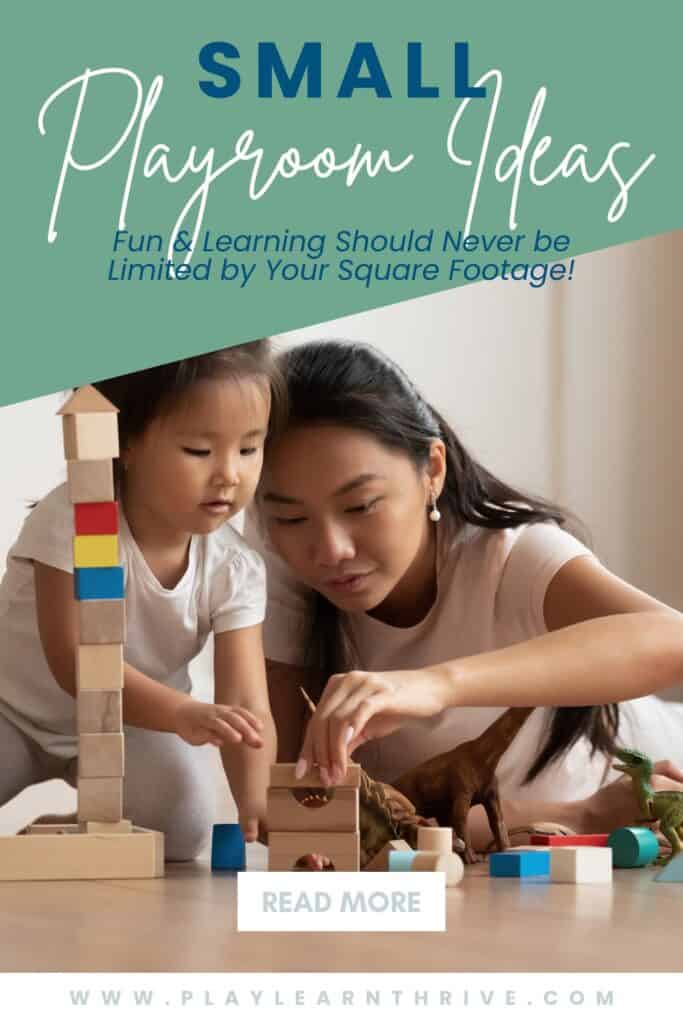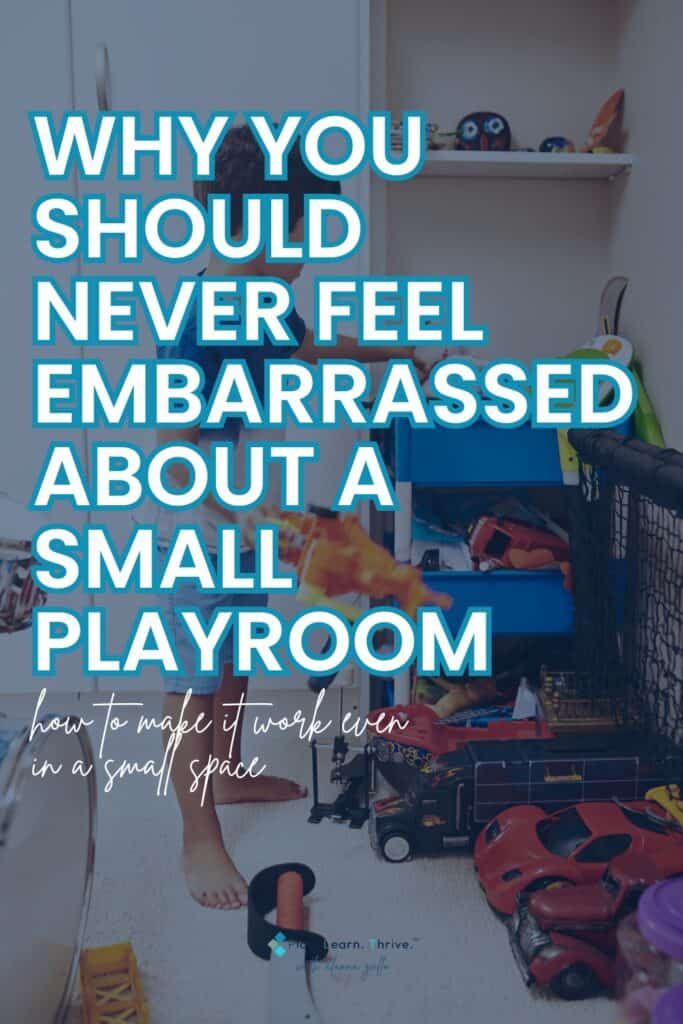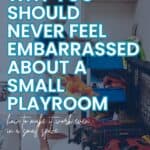Playroom Ideas for Small Rooms: Smart Solutions for Fun and Functionality
Small space? No problem! Here are some of our best solutions for playroom ideas for small rooms! Fun and functionality should never be limited by square footage!
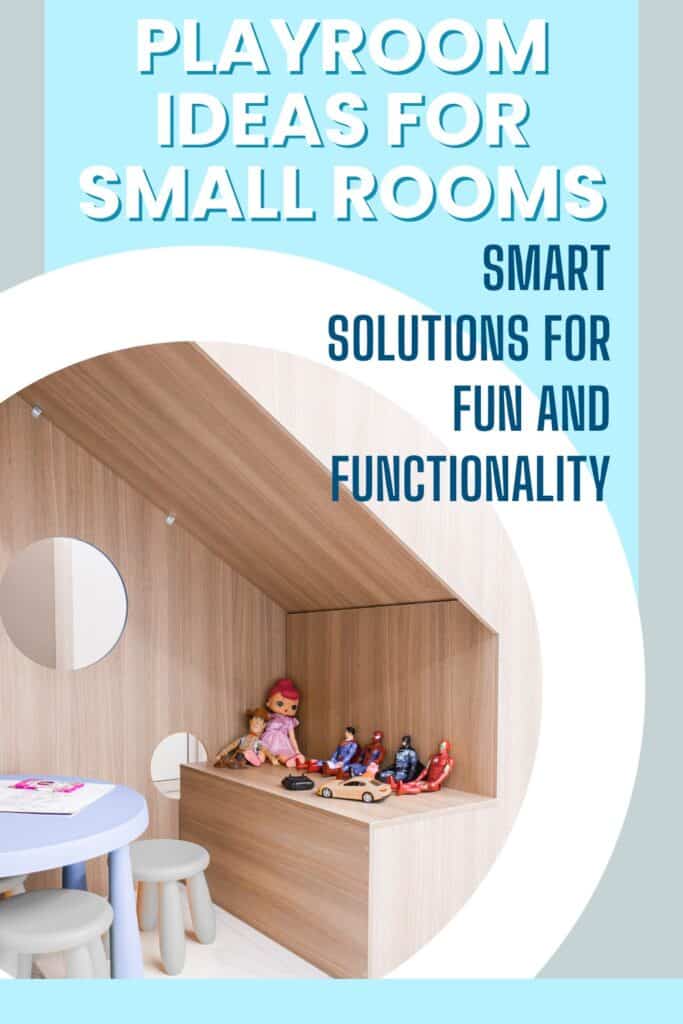
Play. Learn. Thrive.™ only endorses products we authentically love and use. Some of the product links in this post may be affiliate links. That means that if you click them and make a purchase, this site makes a commission. Play. Learn. Thrive.™ is also an Amazon Associate. As an Amazon Associate, we earn from qualifying purchases. It will have no impact on the price you pay or the experience of your purchase.
Thanks for stopping by Play. Learn. Thrive.! I’m Alanna Gallo, a former teacher with a master’s in education who saw firsthand how kids were losing confidence, independence, and their natural love of learning.

I left the classroom to help parents raise curious, capable, and screen-conscious kids in a world that doesn’t make it easy. My work has been featured in major media outlets, and I’m here to give you real, research-backed advice—without the guilt trips or unrealistic expectations.
If you’ve ever found yourself wishing for a bigger playroom but know that’s just not in the cards, don’t worry—you’re not alone! Many families are working with small spaces, but that doesn’t mean you can’t create an engaging, functional, and clutter-free play area for your kids. The key is intentional design, smart storage, and a focus on open-ended play.
Our Very Best Playroom Ideas for Small Rooms
Here’s how you can make the most of a small playroom—or even a corner of your living space—without sacrificing fun or functionality.
Create Zones for Different Types of Play
Even in a small space, defining different play areas can help your child feel like they have plenty of room to explore and engage in different activities. Instead of spreading toys everywhere, use visual cues like small rugs, shelves, or wall decals to designate specific play zones.
Consider:
- A reading nook – A cozy floor cushion or bean bag paired with floating bookshelves can create an inviting space for kids to enjoy their favorite stories.
- A building station – A small table or a low shelf with baskets for LEGO, magnetic tiles, or wooden blocks keeps construction projects contained.
- A pretend play corner – Even a small space can accommodate a play kitchen, dollhouse, or small puppet theater to encourage imaginative play.
- A creative station – A wall-mounted art easel, a roll of butcher paper, or a magnetic chalkboard wall allows for mess-free artistic expression.
By intentionally designating play zones, you make the space feel organized while still giving your child plenty of variety in their play.
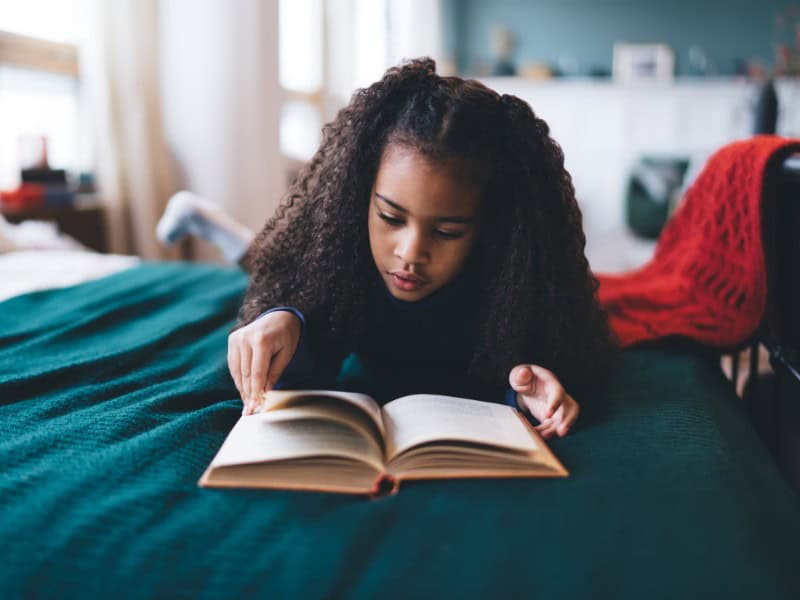
Choose Multi-Functional Furniture
When space is limited, every piece of furniture needs to serve more than one purpose. Look for items that can adapt to different needs and save room while still offering plenty of functionality.
Some great multi-use furniture ideas include:
- A storage bench – Provides seating for reading or playing while doubling as hidden storage for toys, books, or craft supplies.
- A foldable table and chairs – Perfect for arts and crafts, puzzles, or sensory play, and can be stored away when not in use.
- A loft bed with a play area underneath – If your child’s bedroom doubles as their playroom, a loft bed creates extra floor space for a cozy play area, reading nook, or even a small work desk.
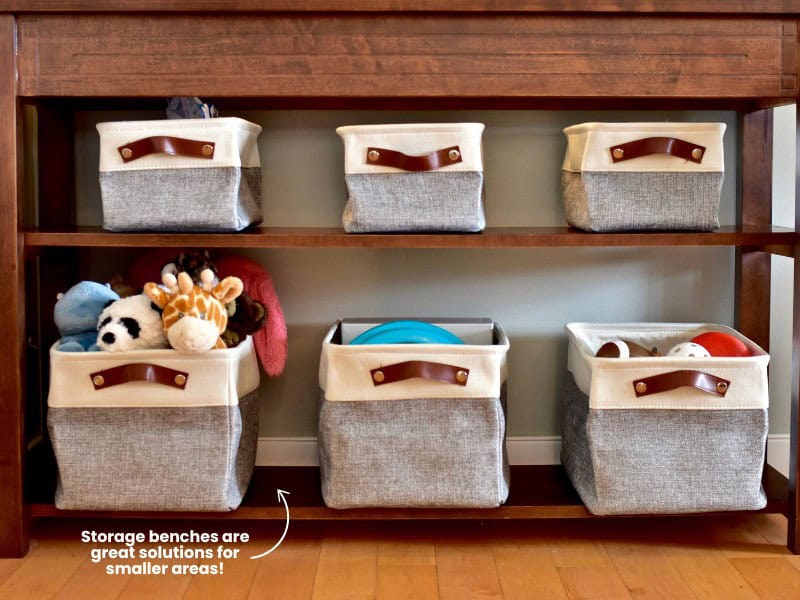
These space-saving solutions help maximize the playroom’s usability without making it feel overcrowded.
Go Vertical with Storage
When floor space is at a premium, don’t forget to make use of your walls! Vertical storage solutions allow you to store toys, books, and supplies without sacrificing valuable play space.
Some smart vertical storage ideas include:
- Floating shelves – Ideal for books, small toys, and decorative items, keeping them within easy reach without taking up floor space.
- Hanging wall baskets – Perfect for stuffed animals, dolls, or art supplies, freeing up storage bins and shelves below.
- Pegboards with hooks – A flexible storage solution that allows you to hang baskets, cups for craft supplies, or even small bins for loose parts.
- Magnetic strips – A fun way to store toy cars, magnetic letters, or small figurines for easy access.
- Over-the-door organizers – Great for puzzles, board games, or craft materials that might otherwise take up too much shelf space.
By going vertical, you free up more room for actual play while keeping everything neat and accessible.
Rotate Toys to Keep the Space Fresh
Instead of overwhelming your child with too many toys at once, use a simple toy rotation system. This strategy keeps the playroom organized while also keeping playtime exciting.
How to implement toy rotation:
- Select a few open-ended toys to keep out at a time.
- Store the rest in labeled bins in a closet or under the bed.
- Every few weeks, swap out the toys to introduce fresh play opportunities.
- Observe what your child gravitates toward and adjust accordingly.
Not only does this prevent clutter, but it also encourages deeper, more engaged play since kids aren’t overstimulated by too many choices.
Use Neutral or Light Colors to Make the Room Feel Bigger
The colors you choose can significantly impact how spacious a small room feels. Light, neutral shades help reflect natural light, making the space feel open and airy.
Ways to make a small space feel bigger with color:
- Opt for soft whites, pastels, or light grays on walls.
- Use pops of color through artwork, rugs, and decorative baskets rather than overwhelming the space with bold furniture.
- Incorporate mirrors to reflect light and create an illusion of more space.
- Choose natural wood tones for furniture to add warmth while maintaining a minimal aesthetic.
Even if your playroom is a small nook, thoughtful color choices can make it feel more spacious and inviting.
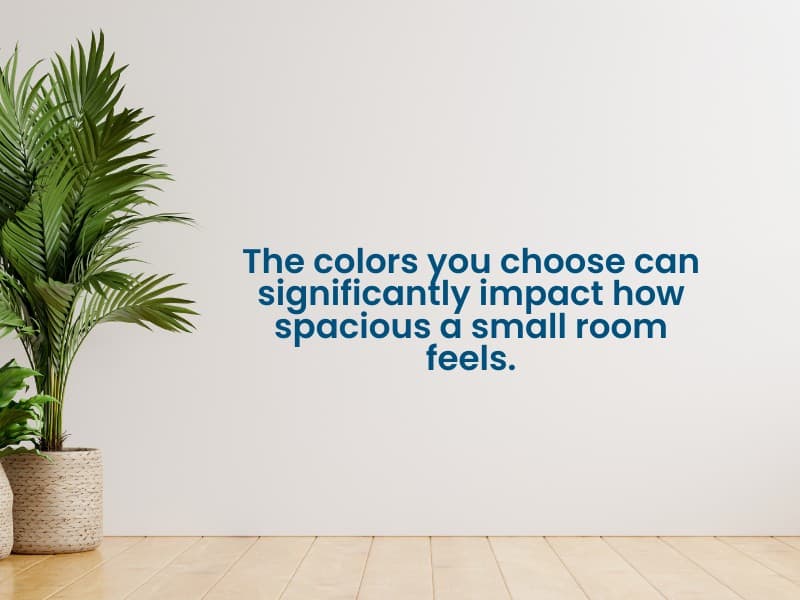
Incorporate Foldable or Hidden Storage Solutions
If your playroom is part of a shared space—like a living room or bedroom—having storage that disappears when not in use is essential.
Some great hidden storage ideas:
- Foldable play mats – Soft mats for active play that can be tucked away when not in use.
- Collapsible bins – Can be hidden under furniture or stacked neatly in a closet.
- A Murphy desk – A fold-up wall desk that doubles as a creative station but takes up no space when closed.
These simple tricks allow kids to have an accessible play space while keeping the home tidy when playtime is over.
Encourage Open-Ended Play with Thoughtful Toy Choices
When working with a small space, large, single-purpose toys can quickly take over. Instead, focus on open-ended toys that encourage creativity and multiple forms of play.
Great open-ended toy options for small spaces:
- Wooden blocks and magnetic tiles for endless building possibilities.
- Play silks for fort-building, dress-up, and imaginative play.
- A small dollhouse or animal figures for storytelling.
- Loose parts (wooden rings, pinecones, stones, fabric scraps) for creative, nature-inspired play.
These types of toys don’t just save space—they foster independent, meaningful play and reduce the need for excess.
Ready to Cut Back on Screen Time?
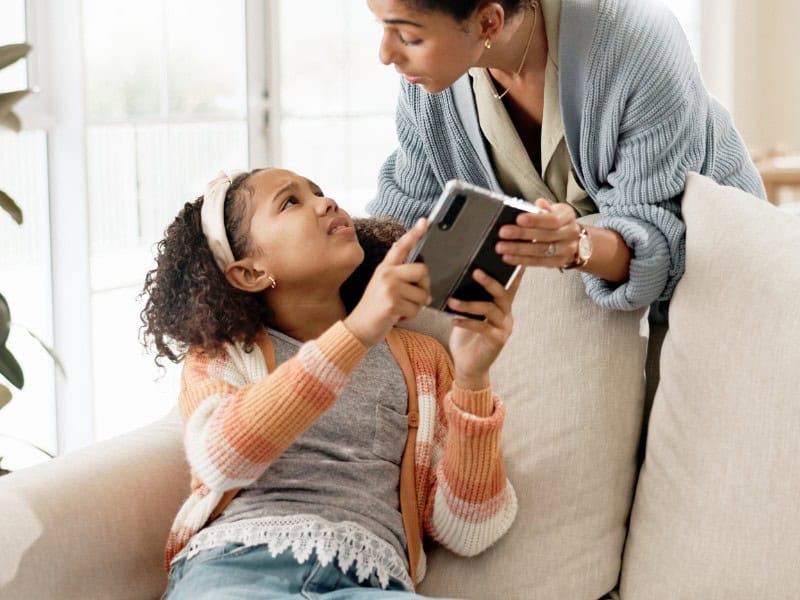
Our free Screen-Free Starter Kit gives you gentle, research-backed strategies to reduce screen time and reconnect with your child—without guilt, tears, or power struggles.
✨ Create a calmer, more connected home—starting today.
Make It Easy for Kids to Clean Up
A small space can quickly feel chaotic if there isn’t a simple cleanup system in place. Teaching your child to tidy up their play area makes a huge difference in keeping the space functional and enjoyable.
Ways to make cleanup easier:
- Use labeled bins and baskets – Picture labels work great for younger kids!
- Keep storage low and accessible – So kids can reach and put away their own toys.
- Create a “one toy out at a time” rule – To prevent the space from getting too cluttered.
- Make cleanup part of the routine – A fun song or timer can make it more engaging.
When kids can easily clean up after themselves, the playroom stays organized with minimal effort.

Even if you don’t have a dedicated playroom, a small-space play area can still be magical, engaging, and functional with a little creativity. By choosing multi-purpose furniture, utilizing vertical storage, and keeping toy choices intentional, you can create a space where your child can play, learn, and thrive—without overwhelming your home.
Inspired by this post? Be sure to subscribe download my free Screen-Free Starter Kit! For more insights and resources on raising confident, lifelong learners, be sure to follow me on Instagram – can't wait for you to join me!


